The shortlisted entrants for the Young Architect of the Year award have made big strides so far in a challenging profession. Thomas Lane, Ike Ijeh and Elizabeth Hopkirk talk to some talented young designers honing their skills. Photography by Tom Campbell
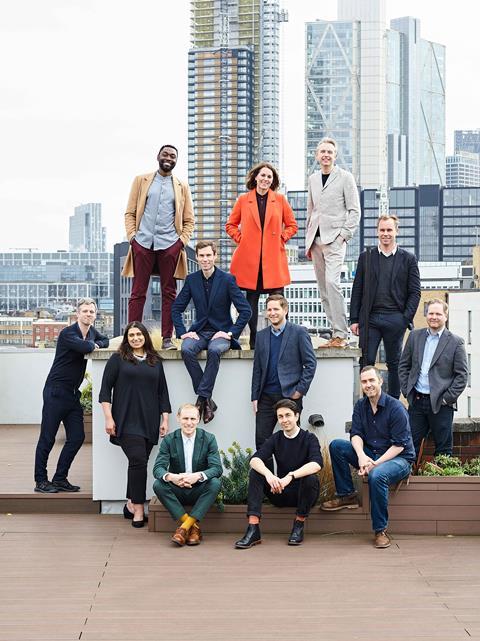
“Making a name as an architect is tough. Once the onerous seven-year training is over, architects have a choice of working in an established practice where they will always work in the shadow of the principal who set it up. If they strike out on their own they will invariably subsist on a diet of house extensions and refurbishments for private clients. Breaking away from this means a stroke of luck or more likely, sheer determination and hard work to persuade a professional client to give them that big break. To take this on and become the big practice of tomorrow requires a combination of design brilliance and business nous.
“The BD Architect of the Year Awards celebrates the achievements of those who break through with the Young Architect of the Year award. Our shortlisted practices demonstrate they can bring new ways of thinking to a broad range of work and deliver enhanced value for clients and those who use these projects. Here, we talk to them to find out how they made it.”
Thomas Lane, group technical editor
It is not easy for young architects with no track record to start up in practice. Winning work is a challenge as very few professional clients will trust relative unknowns with the design of multimillion-pound jobs. This means most young practices survive on a lean diet of house extensions and refurbishments for small private clients. Progressing from these meagre pickings onto bigger, richer pastures is notoriously difficult, particularly when it comes to public sector procurement. Then there is all the bureaucracy including planning, CDM, building regulations and all the paperwork that goes with running a small business. Architects spend seven years training but receive virtually no business education, often leaving them ill equipped to manage, market and expand a small practice.
But there are some that crack these challenges and go on to be the big practices of tomorrow. These architects manage to combine design talent with business nous including the ability to persuade clients their design ability outweighs the risk of their relative inexperience. Slowly but surely these firms climb through the glass ceiling to bigger and better things.
The BD Architect of the Year Awards recognises this challenge with the Young Architect of the Year award. Unique among architectural awards for recognising a body of work, it shortlists practices that demonstrate they can bring new ways of thinking to a broad range of work and deliver enhanced value for clients and those who use the buildings. We invited BD’s shortlist of eight emerging stars to our new offices to talk about their priorities, aspirations and the difficulties facing young architects today.

Patrick Michell
Partner, Platform 5 Architects, London (practice size: 7)
Summarise your design philosophy and priorities for your projects
We like to go through a thorough briefing with the client and come up with a clear strategy for the project. We turn that into simple, crafted spaces where we prioritise human experiences including how these are used, the light, materiality and sequencing of spaces.
What are your ambitions for the practice and what are your plans for achieving this?
We are looking to grow now we have a solid base in our key sectors of housing, commercial, education and museum work. We are going through a process of systemising our business. Many practices get to 20–30 strong and hit a wall as you need systems in place to effectively manage a practice. Otherwise the quality of your service might drop.
What do you consider are the biggest challenges facing architects setting up in practice today?
I think it is a really good time to set up. British architecture is in a very positive state because of the public and client interest in design. It creates expectations of what public spaces and buildings should be. On the flip side the low fee environment is difficult – this is the result of architects not having any grounding in running a business. If the RIBA encouraged some of that type of training the profession would be in a much better state.
If there was one thing that you could change to improve the quality of the built environment, what would that be?
If you look at how people and things move around cities disruptive technologies present huge opportunities to change our environment and public realm with more cycling infrastructure and pedestrian-focused spaces. When we look back in the future we will ask why we allowed internal combustion engines in cities for so long; it’s like smoking in pubs.

Emily Burnett and Rhys Cannon
Directors, Gruff Limited, London (practice size: 10)
Summarise your design philosophy and priorities for your projects
Burnett: We like to experiment through detailing, craftsmanship, texture, colour and spatial relationships. For example we have a 3D printer and a CNC machine, which we use to create bespoke objects that we can use in projects. This could be small objects used internally or items that can be replicated for use externally, for example on a facade.
What are your ambitions for the practice and what are your plans for achieving this?
Cannon: We are quite comfortable as we are. We want a nurturing environment for the staff where they can be creative and take risks with design and an uncompromising attention to detail. We would like to turn our attention from small domestic jobs to bigger projects, for example public buildings and retail.
What do you consider are the biggest challenges facing architects setting up in practice today?
Burnett: Staying agile and flexible is a challenge when there are so many external influences to deal with including planning, legislation and clients changing their minds.
Cannon: The challenge is getting people to recognise the value of design so it is valued and cherished by clients and properly remunerated.
If there was one thing that you could change to improve the quality of the built environment, what would it be?
Cannon: Allowing smaller practices with fresh ideas to compete with more established practices by challenging the prequalification criteria on many public schemes, which is too onerous and difficult for small practices. This would challenge the risk-averse mindset that exists in many commissioning bodies.
Burnett: A bit more colour, texture and street art.
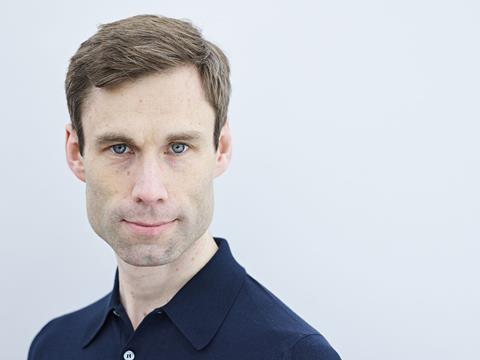
Richard Bell
Principal, Richard Bell Architecture, London (sole practitioner)
Summarise your design philosophy and priorities for your projects
The priorities depend on the brief and the client, but as a philosophy I always try and pare things down to a minimum in terms of form and materiality – what can we do without? Then it’s doing the simple things well so what’s left will hopefully result in a calm, elegant blank canvas where life can play out, a space that people can make their own.
What are your ambitions for the practice and what are your plans for achieving this?
Stay small and work for nice people! What I would like to get into next is medium- to high-density housing. My wife and I have just moved into a 1960s block of flats which was designed really well. There is private outdoor space, social spaces where people stop and say “hello” and dynamic internal spaces. These blocks do so much to promote a social and caring community but is difficult to get right and is so often not done well.
What do you consider are the biggest challenges facing architects setting up in practice today?
Distractions. There is so much to do and worry about from business administration, client management, contract administration, regulations and marketing. These things need to be done but the one thing where the architect adds value is through design, which is so easy to forget under the weight of all this management stuff. Too often we just start churning out drawings without taking time to really think about design.
If there was one thing that you could change to improve the quality of the built environment, what would that be?
A change of mindset in terms of how we look at housing. Too often we think of housing as a tradeable commodity or investment. This means developers try to cater for everybody and nobody, which means everything looks the same, nobody wants to be individual or take a risk with design.
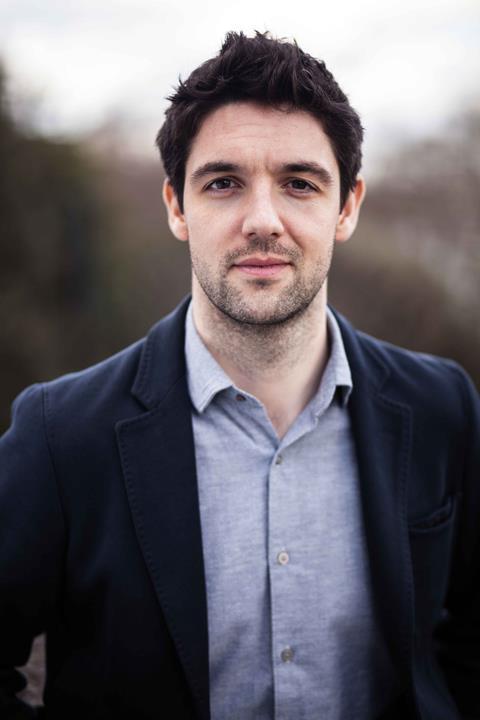
Paul Ruff
Principal, Ruff Architects, London (practice size: 7)
Summarise your design philosophy and priorities for your projects
I set up the studio three years ago after working at some amazing practices and learning a huge amount about relationships, design and process, in order to deliver ambitious jobs for clients. I’ve tried to ensure Ruff Architects is the best at all of these things from day one. We take an analytical approach and challenge the brief on each project to come up with a considered, rational and beautiful scheme, regardless of the scale or complexity. We’ve been lucky enough to partner with larger, more established practices on varying-scale projects, which has also helped define our ethos. Our work has a common denominator of quality and innovation, regardless of sector or tenure. We are finding our natural style, but this is more than skin deep and comes from our thinking and approach as much as building materials and composition.
What are your ambitions for the practice and what are your plans for achieving this?
We are hugely ambitious, and have achieved a vast amount in the short period we’ve been practising. I feel this is because we are non-sector-specific and look to work at all scales. We are lucky enough to be already undertaking one-off houses and 50- to 400-unit schemes, as well as being involved in multimillion-pound masterplans.
What do you consider are the biggest challenges facing architects setting up in practice today?
Juggling! To be able to balance various scales of work, and to show we are able to deliver ambitious scales of projects, challenging the preconception that you will be undertaking only small domestic projects when setting up on your own. We have managed to make a side step into interesting scales, thanks to the support of previous bosses, clients and contacts.
If there was one thing that you could change to improve the quality of the built environment, what would that be?
Joined-up thinking translating into joined-up buildings. The challenges of getting any building built requires a collaborative approach. The big picture of the delivery of homes is complex – from policy-challenging and land values, to public and private developer viability.
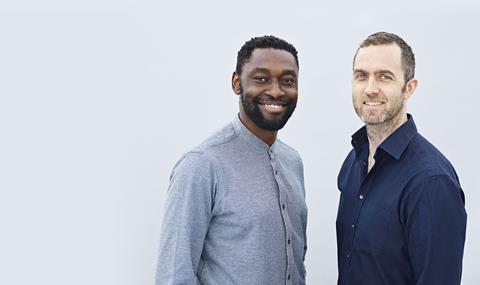
Samuel Kapasa and Cian Glasheen
Architect/senior architect, Group Ginger, Leeds (practice size: 6)
Summarise your design philosophy and priorities for your projects
Glasheen: We seek to create desirable places that people want to go back to and we do that by thinking about the end user. We try and understand the client’s business plan as well as the special opportunities of a project.
Kapasa: We often design public-facing spaces that celebrate a foreground of activity while the architecture forms a backdrop. We seek to cater for diverse and inclusive audiences such as at Tophill Low [nature reserve] where visitors include twitchers and school groups.
What are your ambitions for the practice and what are your plans for achieving this?
Kapasa: We aim to do good work for good people. We don’t focus on growth for growth’s sake but on quality and a diverse portfolio. Our priorities and philosophy place us at an advantage when working outside the capital because of the economic constraints we often come across.
Glasheen: Working where property values are low requires a sound understanding of the business model of a project and the special strategy then follows.
What do you consider are the biggest challenges facing architects setting up in practice today?
Glasheen: The continual process of securing new work and establishing new clients.
Kapasa: Once you’ve formed a great team one challenge is sustaining it through the changing scale of projects and flux of business. One way we have responded is to create links with universities. We teach and in return we offer opportunities for students to gain valuable experience during busy periods. This allows us to be flexible through the peaks and troughs of business.
If there was one thing that you could change to improve the quality of the built environment, what would it be?
Glasheen: We would like to see more short-, medium- and long-term development strategies in place for large infrastructure projects to prevent land stagnation in regional cities. Sustaining activity in cities creates a more dynamic built environment. That’s why we’re interested in short-term and temporary projects. That drives a lot of our work.
Kapasa: There should be more paid competitions and invitations to tender.That would be a massive help for small businesses.

Ben Ridley and Amrit Marway
Director/associate director, Architecture for London, London (practice size: 7)
Summarise your design philosophy and priorities for your projects
Ridley: We don’t really have a design philosophy but we look to produce finely crafted buildings and each project is a response to the particularities of the client and site and the things that inspire us at that moment in office.
What are your ambitions for the practice and what are your plans for achieving this?
Marway: One of the things the practice has become quite passionate about exploring is cohousing. Ben has a Passivhaus qualification so we’d love to work on projects that involve both. We are always seeking opportunities because things are never going to land in your lap. For example, we walked up to our landlord and said, “Would you like to add another floor on top?” and he said yes. Now it’s happening and we’re going to have to move out!
Ridley: We’re very happy with where we are: we have a really good team and clients. We do a lot of resi and it would be great to diversify. We’ve been doing a few more competitions in other sectors, such as public projects.
What do you consider are the biggest challenges facing architects setting up in practice today?
Ridley: It’s relatively easy today because it’s simple to set up a website and find a coworking space. But at the same time unaffordable housing means the architect’s classic first project – their own home – is increasingly out of reach because they can’t afford a home to renovate. So maybe it’s harder to grow a portfolio if you’re starting now than it was 10 years ago.
If there was one thing that you could change to improve the quality of the built environment, what would that be?
Marway: It’s the classic architect’s set-up: you do a beautiful drawing, send it in to planning and suddenly you’re told it’s not possible and you’re struggling to get your head round the rules and regulations. There should be more architects in local authorities and planners with a design background. It’s rare here but in Switzerland and Germany they employ architects to judge architects’ work and it creates better environments.
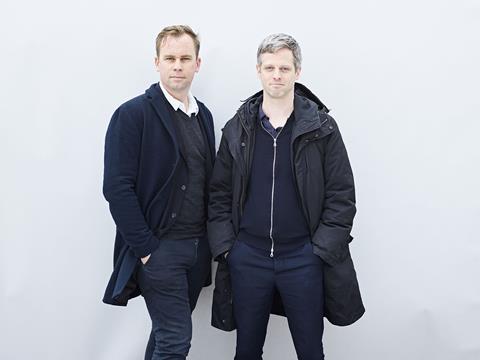
Andrew Clancy and Colm Moore
Partners, Clancy Moore Architects, Dublin (practice size: 4)
Summarise your design philosophy and priorities for your projects
Clancy: There’s a symbiotic link between teaching and practice. It’s helped us to understand there is a pluralistic need to anchor our work in different levels of empathy and this then underpins our conversations with clients. The Irish architect experience is also important to us. Ireland has a supportive cross-generational architectural community. There’s also a strong tradition of constant curiosity and cultural ambiguity, a commitment to looking at what happens beyond our own borders.
Moore: Oddly perhaps the recession had an unlikely impact on us. There’s a whole generation of Irish architects who weren’t able to build anything for around five years but spent that time thinking and developing ideas that are now coming to fruition.
What are your ambitions for the practice and what are your plans for achieving this?
Clancy: Our practice is fundamentally linked to the places where we teach, and empowering students by enabling them to more rigorously engage in discourse and be more ambitious is central to what we want to do. Also, we crave a certain naivety. So much of architects’ best work is in their earliest projects; we want to keep on asking the questions that come from a lack of familiarity.
Moore: We want to build our practice as a cultural unit; a family of friends and colleagues. What you achieve is less important than the spirit in which you achieve it.
What do you consider are the biggest challenges facing architects setting up in practice today?
Clancy: Procurement. What’s important is to have conversations about architecture rather than the commerce of architecture. But it’s difficult to have those conversations when public work is kept away from young practices and government policy doesn’t back the skills and abilities that can’t be quantified economically.
Moore: Because of this young architects are left specialising in residential work and find it extremely difficult to make the shift up to other sectors. Other challenges are architectural practice not always being best served by apprenticeship and education.
If there was one thing that you could change to improve the quality of the built environment, what would it be?
Clancy: It would be great if there were some system that recognised all the work done by people who don’t necessarily practise as architects but create the space for architecture to flourish. I don’t know how you’d do it but it would be great to empower that community.
Moore: The Miss World question! It would be good to have more architects working in the planning system as was once the case which might help with a broader public appreciation of architecture. There should be more collaboration, people need to aspire to a world beyond whatever degree they studied. Without, there’s a kind of lost civic grace.
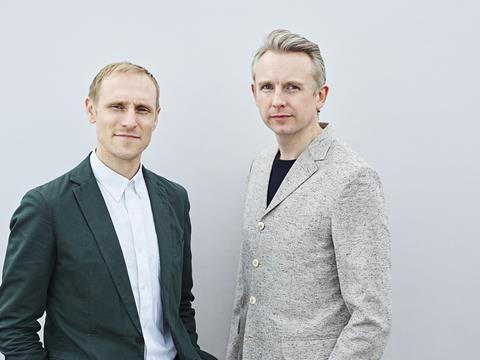
Mark Marshall and James Daykin
Directors, Daykin Marshall Studio, London (practice size: 6)
Summarise your design philosophy and priorities for your projects
Daykin: We don’t want to make architecture for architects; we want to create buildings and spaces that people can react positively to. We also want to make something that resonates with context, whether that be social, industrial, material or historic.
Marshall: We want to create buildings that work with local atmosphere and character; that’s a harder context to define but it’s hugely important. We also like to work with craft and materiality and are interested in how buildings are made and roles played by wood, metal, stone, etc. First and foremost we want to create buildings that last.
What are your ambitions for the practice and what are your plans for achieving this?
Daykin: We want to take our time and never stop learning. We still have teaching connections in university and we enjoy the process of accumulating knowledge. Mark and I have been friends since we were 11 so we have a very team-based to our practice.
Marshall: Yes, we’re very discursive. We believe we’ve grown steadily by having a varied portfolio starting with residential and gradually moving to larger schemes. We’ve also been very careful at choosing competitions. We want that to continue.
What do you consider are the biggest challenges facing architects setting up in practice today?
Daykin: It’s incredibly hard to step up from the scale of smaller projects to larger ones and the broken procurement system doesn’t help. The vast majority of young practices work in residential.
A risk averse, tick-box procurement system is not conducive to good architecture.
Marshall: It’s actually difficult to make good choices with the sea of information we’re bombarded with. Consequently architecture and design have a much broader popular profile than they used to and this leads to clients wanting a finished “image” rather than a building that’s been developed through an architectural process. But you can’t design an image.
If there was one thing that you could change to improve the quality of the built environment, what would it be?
Daykin: Planning should be more plan-led; less reactive and reactionary. The system is too fragmented and there should be better connections between architecture and town planning.
Marshall: Yes, planning needs to be reformed and there needs to be much more of a dialogue between planners and architects. I’d better integrate education too.

The winners will be announced at the BD Architect of the Year Awards on 18 April. Book your place at www.awards.bdonline.co.uk/book-a-table. For full list of AYA categories and images of shortlisted schemes go to BDonline.co.uk



























No comments yet